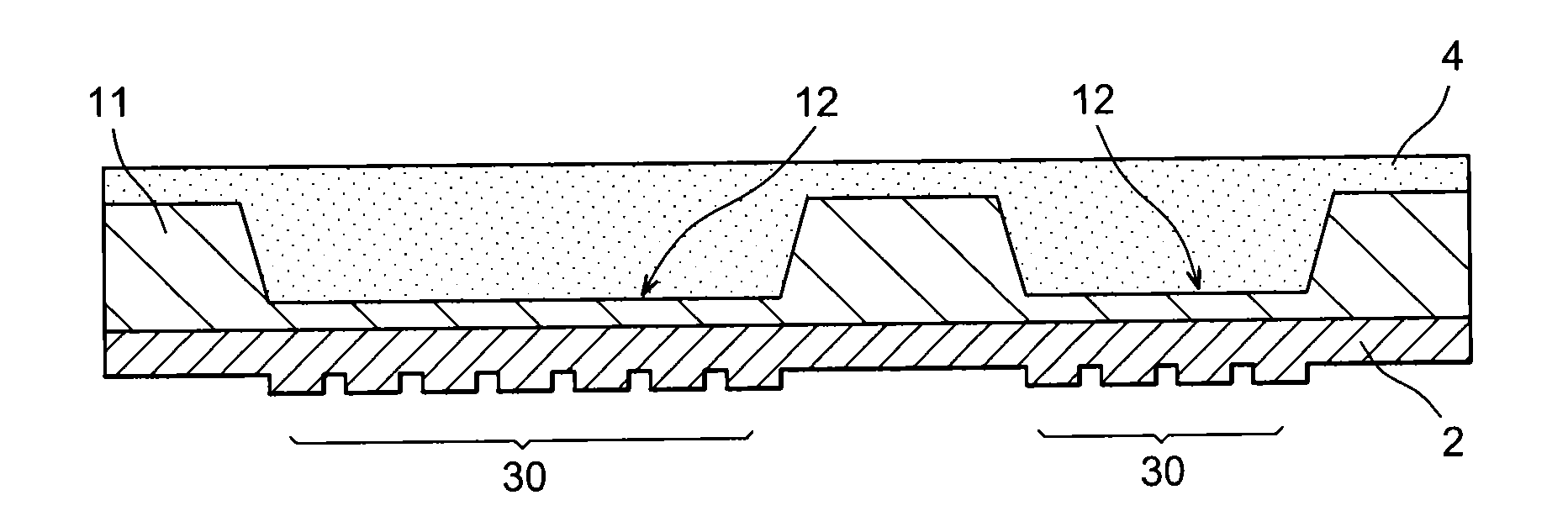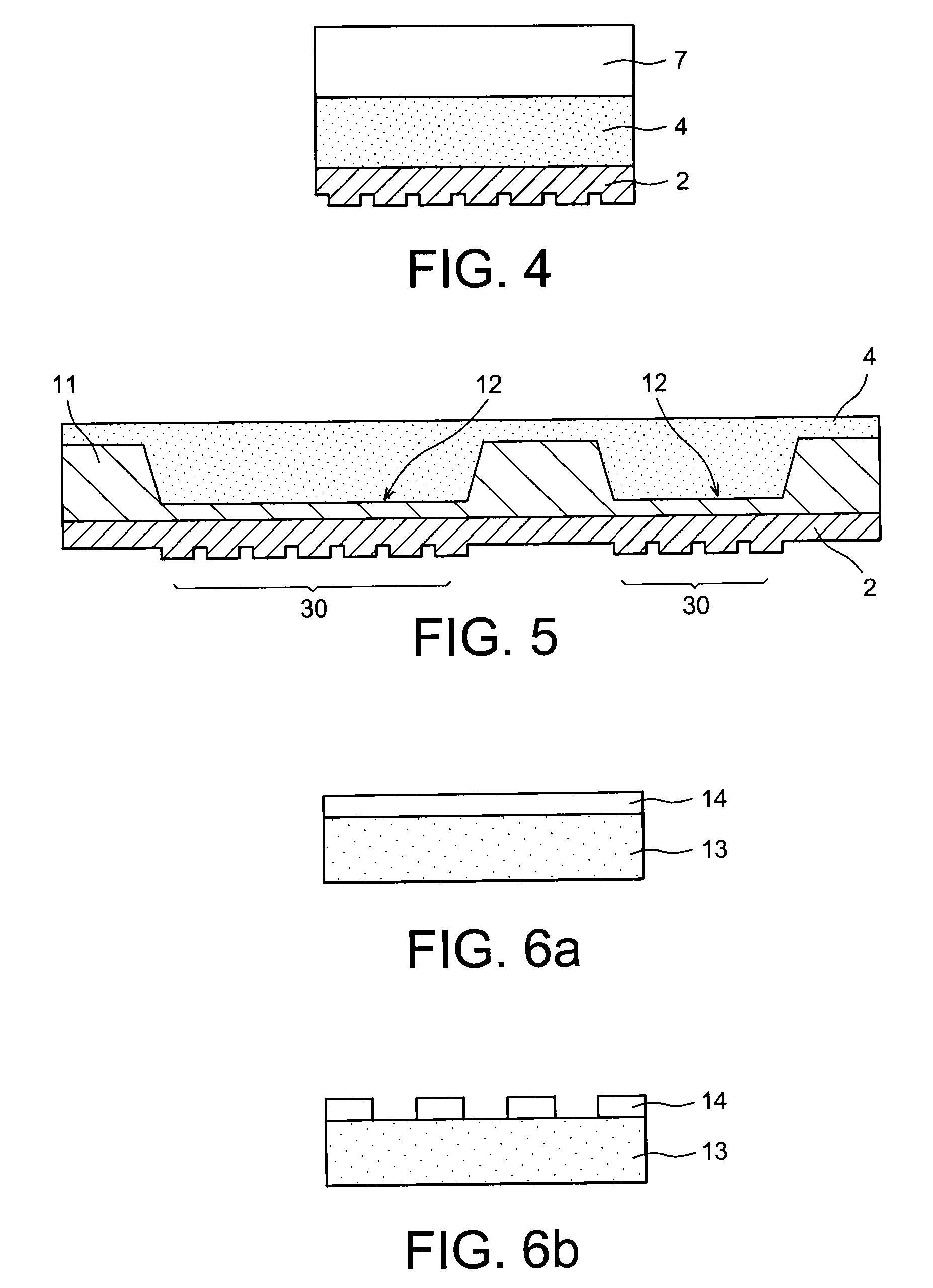Mould for lithography by nano-imprinting and manufacturing methods
a technology of nano-imprinting and moulds, applied in nanotechnology, dough shaping, baking, etc., can solve the problems of difficult or impossible to obtain uniform contact, difficult to manufacture moulds by lithography and etching, and difficult to achieve uniform conta
- Summary
- Abstract
- Description
- Claims
- Application Information
AI Technical Summary
Benefits of technology
Problems solved by technology
Method used
Image
Examples
Embodiment Construction
[0016]This aim is achieved by means of a mould for lithography by nano-imprinting having a first structured face including n structured zone(s) with patterns of micrometric or nanometric size, where n is an integer greater than or equal to 1, characterised in that the said first structured face belongs to a first layer which is supported by a second layer, and where the first layer is made of a rigid material and the second layer is made of a flexible material.
[0017]In the foregoing and in what follows the expression “structured with patterns of micrometric on nanometric size”, applied to a face or a layer, means that the face or the layer in question includes patterns, at least one dimension of which, of its length, its width and its diameter, is less than 1 mm and greater than 1 μm, in the case of patterns of micrometric size, and is greater than or equal to 1 nanometre and less than 1000 nanometres in the case of patterns of nanometric size.
[0018]In the context of the invention t...
PUM
| Property | Measurement | Unit |
|---|---|---|
| diameter | aaaaa | aaaaa |
| areas | aaaaa | aaaaa |
| size | aaaaa | aaaaa |
Abstract
Description
Claims
Application Information
 Login to View More
Login to View More - R&D
- Intellectual Property
- Life Sciences
- Materials
- Tech Scout
- Unparalleled Data Quality
- Higher Quality Content
- 60% Fewer Hallucinations
Browse by: Latest US Patents, China's latest patents, Technical Efficacy Thesaurus, Application Domain, Technology Topic, Popular Technical Reports.
© 2025 PatSnap. All rights reserved.Legal|Privacy policy|Modern Slavery Act Transparency Statement|Sitemap|About US| Contact US: help@patsnap.com



